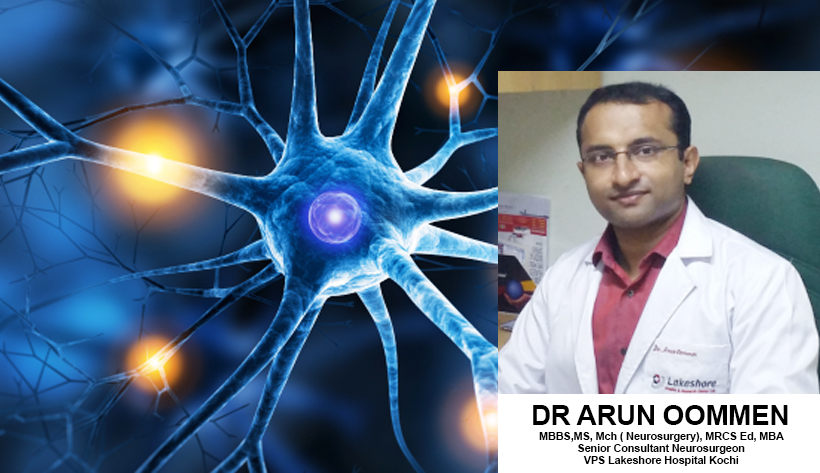02Sep
1
Are brain tumours related to excess cell phone use?
This has been the subject of a great deal of debate in recent years. Cell…
more

Stereotactic radiosurgery (SRS) is a form of radiation therapy that focuses high-power energy on a small area of the body. Despite its name, radiosurgery is a treatment, not a surgical procedure. Incisions (cuts) are not made on your body.
Despite its name, SRS is a non-surgical procedure that delivers precisely-targeted radiation at much higher doses, in only a single or few treatments, as compared to traditional radiation therapy. This treatment is only possible due to the development of highly advanced radiation technologies that permit maximum dose delivery within the target while minimizing dose to the surrounding healthy tissue. The goal is to deliver doses that will destroy the tumor and achieve permanent local control.
SRS is used to treat:
many types of brain tumors including:
arteriovenous malformations (AVMs), a tangle of expanded blood vessels that disrupts normal blood flow in the brain and sometimes bleeds.
other neurological conditions like trigeminal neuralgia (a nerve disorder in the face), tremor, etc.
A spinal tumour is a cancerous (malignant) or non-cancerous (benign) growth that develops within or near your spinal cord or within the bones of your spine. Although back pain is the most common symptom of a spinal tumour, it’s also an extremely common problem in people who don’t have spinal tumours. In fact, most back pain isn’t caused by a tumour.
A spinal tumour or a growth of any kind can affect nerves in the area of the tumour, leading to pain, neurological problems and sometimes paralysis. Whether cancerous or not, a spinal tumour can threaten life and cause permanent disability.Treatment for a spinal tumour may include surgery, radiation therapy, chemotherapy or other medications.
Symptoms of spinal tumour
Depending on the location and type of spinal tumour, various signs and symptoms can develop, especially as a tumour grows and affects your spinal cord or on the nerve roots, blood vessels or bones of your spine. Spinal tumour symptoms may include:
Back pain is a common symptom of both non-cancerous and cancerous spinal tumours. Pain may also spread beyond your back to your hips, legs, feet or arms and may become more severe over time in spite of treatment.Spinal tumours progress at different rates. In general, cancerous spinal tumours grow more quickly, whereas non-cancerous spinal tumours tend to develop very slowly.
Types of spinal tumors
Spinal tumors are classified according to their location in the spine.
Extradural (vertebral) tumours: Most tumours that affect the vertebrae have spread (metastasised) to the spine from another site in the body — often the prostate, breast, lung or kidney. Although the original (primary) cancer is usually diagnosed before back problems develop, back pain may be the first symptom of disease in people with metastatic spinal tumours.
Cancerous tumours that begin in the bones of the spine are far less common. Among these are osteosarcomas (osteogenic sarcomas) and Ewing’s sarcoma, a particularly aggressive tumour that affects young adults. Multiple melanoma is a cancerous disease of the bone marrow — the spongy inner part of the bone that makes blood cells. Noncancerous tumors, such as osteoid osteomas, osteoblastomas and hemangiomas, also can develop in the bones of the spine.
Intradural-extramedullary tumours: These tumours develop in the spinal cord’s arachnoid membrane (meningiomas) and in the nerve roots that extend out from the spinal cord (schwannomas and neurofibromas). These tumors may be cancerous or non-cancerous.
Intramedullary tumours. These tumours begin in the supporting cells within the spinal cord. Most are either astrocytomas or ependymomas. Intramedullary tumours can be either non-cancerous or cancerous. In rare cases, tumours from other parts of the body can metastasise to the spinal cord itself.
Tests and diagnosis
Spinal tumors sometimes may be overlooked because they’re not common and because their symptoms resemble those of more common conditions. For that reason, it’s especially important that your doctor know your complete medical history and perform both general physical and neurological exams. If your doctor suspects a spinal tumor, one or more of the following tests can help confirm the diagnosis and pinpoint the tumor’s location:
Spinal magnetic resonance imaging (MRI):MRI uses a powerful magnet and radio waves to produce images of your spine. MRI accurately shows the spinal cord and nerves and yields better pictures of bone tumors than computerized tomography (CT) scans do. A contrast agent that helps to highlight certain tissues and structures may be injected into a vein in your hand or forearm during the test.
Computerized tomography (CT):This test uses a narrow beam of radiation to produce detailed images of your spine. Sometimes it may be combined with an injected contrast dye to make abnormal changes in the spinal canal or spinal cord easier to see.
Myelogram:In this test, a contrast dye is injected into your spinal column. The dye then circulates around your spinal cord and spinal nerves, making them easier to see on an X-ray or CT scan. Because the test poses more risks than does an MRI or conventional CT, a myelogram is usually not the first choice for diagnosis. However, it may be used to help identify compressed nerves and for those who can’t have an MRI.
Biopsy:The only way to determine whether a tumor is noncancerous or cancerous is to examine a small tissue sample (biopsy) under a microscope. If the tumor is cancerous, biopsy also helps determine the cancer’s grade — information that helps determine treatment options. Grade 1 cancers are generally the least aggressive, and grade 4 cancers, the most aggressive. How the sample is obtained depends on your overall health and the location of the tumor. Your doctor may use a fine needle to withdraw a small amount of tissue, or the sample may be obtained during surgery.




This has been the subject of a great deal of debate in recent years. Cell…
more

Neurological pain is considered one of the most distressing and also one of the most…
more

What is Hydrocephalus?Hydrocephalus is commonly referred to as “water on the brain.” The so-called “water”…
more

A spinal tumour is a cancerous (malignant) or non-cancerous (benign) growth that develops within or…
more

Fibromyalgia is a common and disturbing ailment characterised by chronic widespread pain and a heightened…
more

This has been the subject a great deal of debate in recent years. Cellphones give…
more

Sleep is essential as much as you need to breathe and eat. While you’re sleeping,…
more